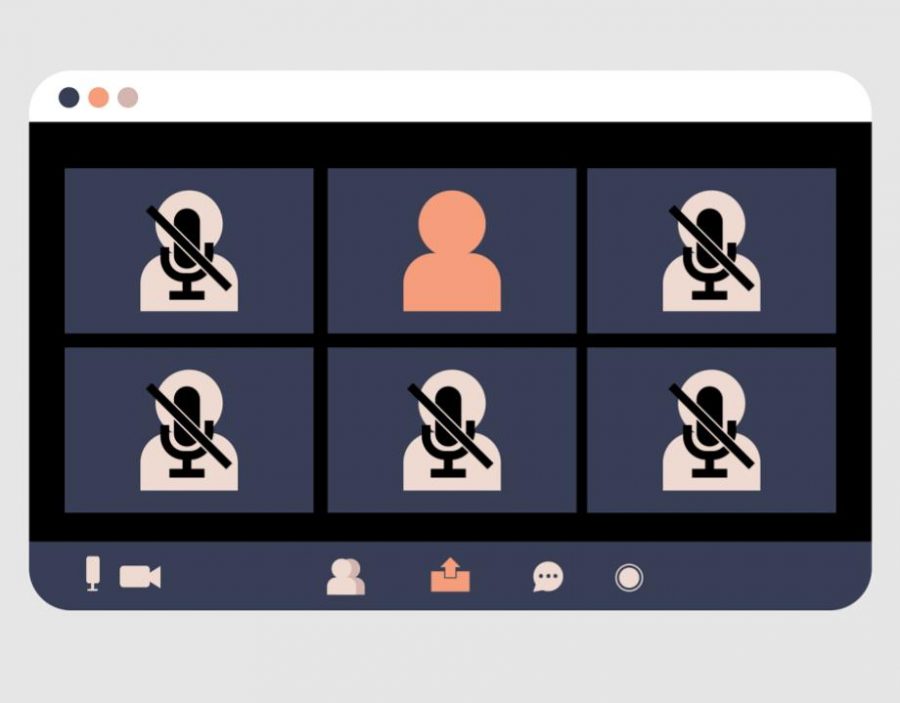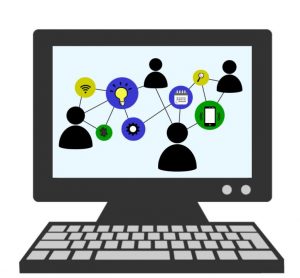Breakout Rooms: Breaking Away From the Silence
Some breakout rooms are silent and no collaboration takes place.
March 5, 2021
As we approach the one-year anniversary of the COVID-19 pandemic, virtual meeting apps, like Zoom and Google Meets, have become synonymous with online schooling.
One key feature of these apps are breakout rooms, which allow the host to assign a couple of participants to a smaller meeting-within-a-meeting; essentially, it is the digital version of dividing into groups in a class, usually for projects, presentations and individual assignments.
While breakout rooms work out great for teachers, I find this a problematic system of online schooling.
Breakout rooms are not at all engaging. It is already difficult enough, especially early in the morning, to get students in a class to turn on their screens. Even I personally will scroll through Instagram or reply to my Snaps rather than pay attention in my classes.
That being said, even getting a fourth of the class actively engaged in Zoom or Google Meet (camera on, raising hands, answering questions, taking notes) is a struggle for most teachers. And putting them into breakout rooms, without a teacher involved and with just a few muted black screens is by no means a way to learn. I’ve been in plenty of situations like this where zero work gets done and I will not be able to answer my teacher’s questions when we are all called back to the main meeting.
In my opinion, this central issue of breakout rooms’ ineffectiveness is mostly because of students’ inability to focus. However, I think teenagers have quite a few reasons for their inattentiveness.
Firstly, the new environment high schoolers have been thrust into with online learning, as well as the many different websites students use on a daily basis and a mix of in-person and online extracurricular events, makes it difficult to comprehend our lessons and schedules and to keep organized in this chaotic arena of virtual learning. So if we don’t understand our lessons because of the barrier technological learning puts on hands-on instruction, we aren’t going to be able to handle the assignments posed to us in breakout rooms.
Secondly, teenagers have become more reliant on their phones now more than ever because it is the primary way for us to stay connected. Most of us are too swamped with school and sports to physically see or even FaceTime our friends, and seeing them on Instagram or talking to them on Snapchat during our time at home sitting in front of a computer is a better oasis in the great social desert that is this pandemic than talking to them briefly once a week in class, which can’t even happen in breakout rooms because of the randomness of the groups and the work we’ve got to tackle. And remember, there’s no guarantee we’ll even have the same class as most of our friends, much less the same breakout room. This can make it uncomfortable speaking to people we don’t know in the room.
Thirdly and most importantly, is just being a teenager in general. The hormones that kick up the energy and emotion of teenagers make sitting and staring at a screen difficult, especially when we enter breakout rooms without a teacher able to keep us somewhat engaged by talking to us and presenting the lesson while asking questions.
Even further, the unstable mental health of many teenagers, especially now, is brought on by strained relationships with friends after being divided in the middle of third quarter last year. So, being in a breakout room while unsupervised makes it so much easier to just check our phones and talk to friends for comfort, instead of a full meet, where we have to pay attention the entire time in case we are asked questions by the teacher or feel the need to take notes to remember a subject.
As you can see, the connection offered by social communication is a great break from virtual learning life, and when we are put in breakout rooms, which have almost no engagement and no incentive to be productive, most of us would rather take a break than actually talk about the assignment, and just lie or take a guess at what we were supposed to be doing when the teacher brings us back to the full Zoom/Google Meet, where we actually need to be active participants one way or another.
The blame here falls on no one: teachers can’t be expected to be in ten rooms at once and a good amount of teenagers have a huge struggle in just trying to pay attention in class, especially when the subject matter bores us or becomes more difficult, and we don’t have the comfort of a teacher in the same room to help guide us.
My solution is simple: stop using breakout rooms. Our best chance at coping with the remainder of remote learning is by keeping the entire class together and engaged. By doing more work together and letting teachers lead the conversation so the class can join, it’ll make online school less stressful and easier to focus on for students and boost participation that has been lacking in most classes in general.






Robin Cherry • Nov 6, 2021 at 11:27 am
I cringe at the daily use of breakout rooms in virtual learning. I have a 6th grader and a 2nd grader and the 2nd grader in particular is not benefiting at all from being thrown into a breakout room several times a day.
These rooms are loud, chaotic and very rarely is anything accomplished there. Personally I find them to be a sign of lazy teaching.
My kids are in class approximately 6 hours a day. I invest another 2 hours minimum with my 2nd grader to insure he understands the material .